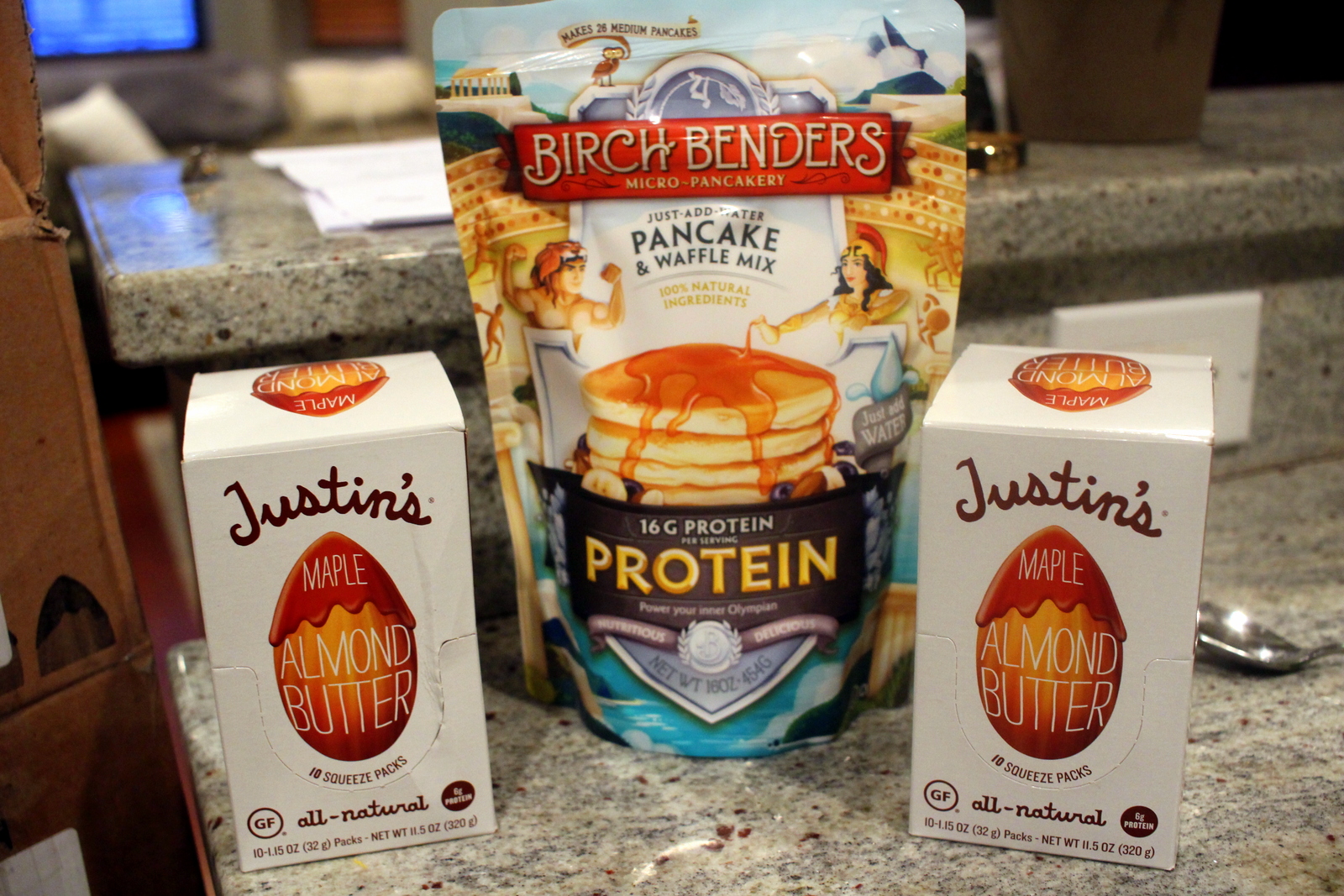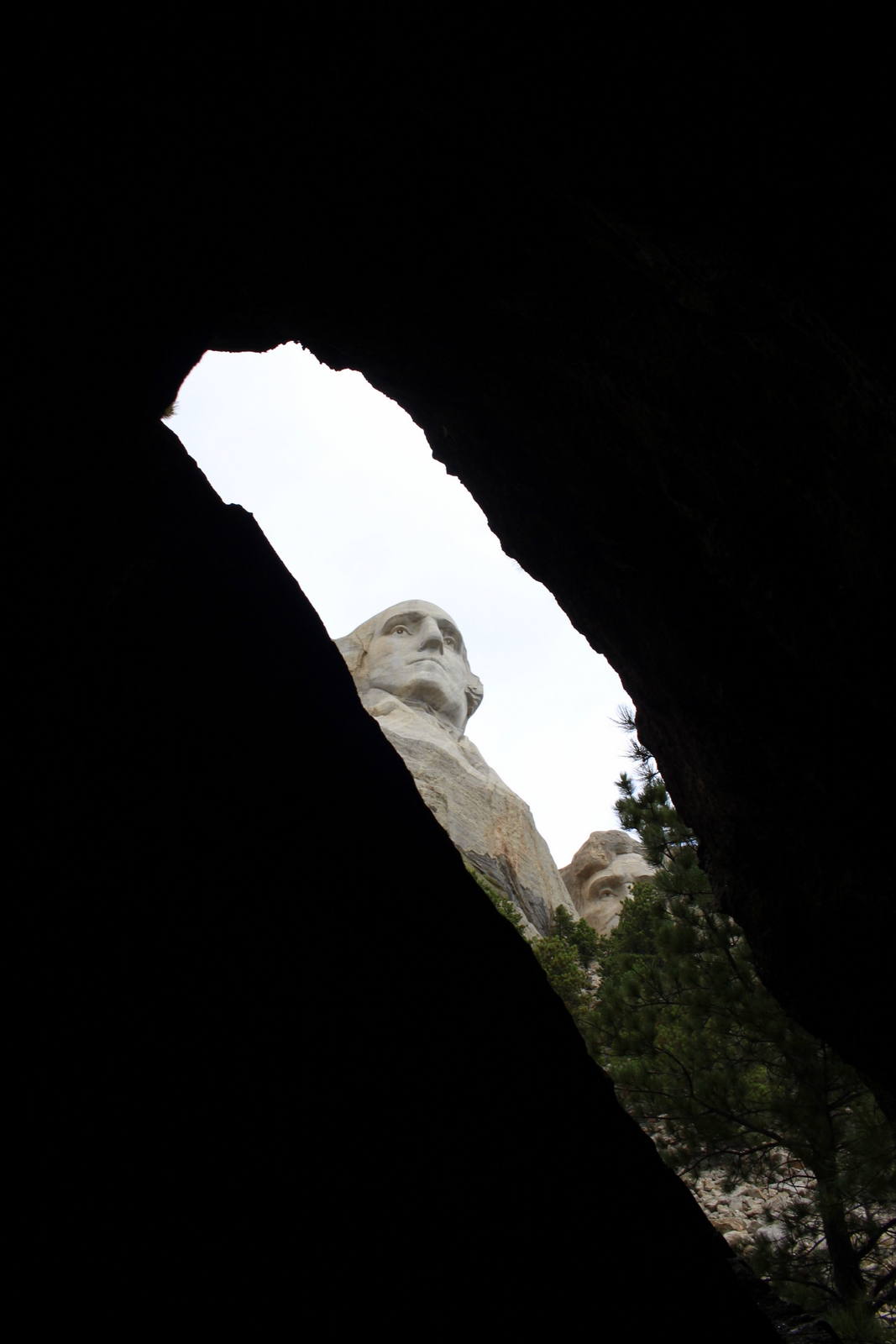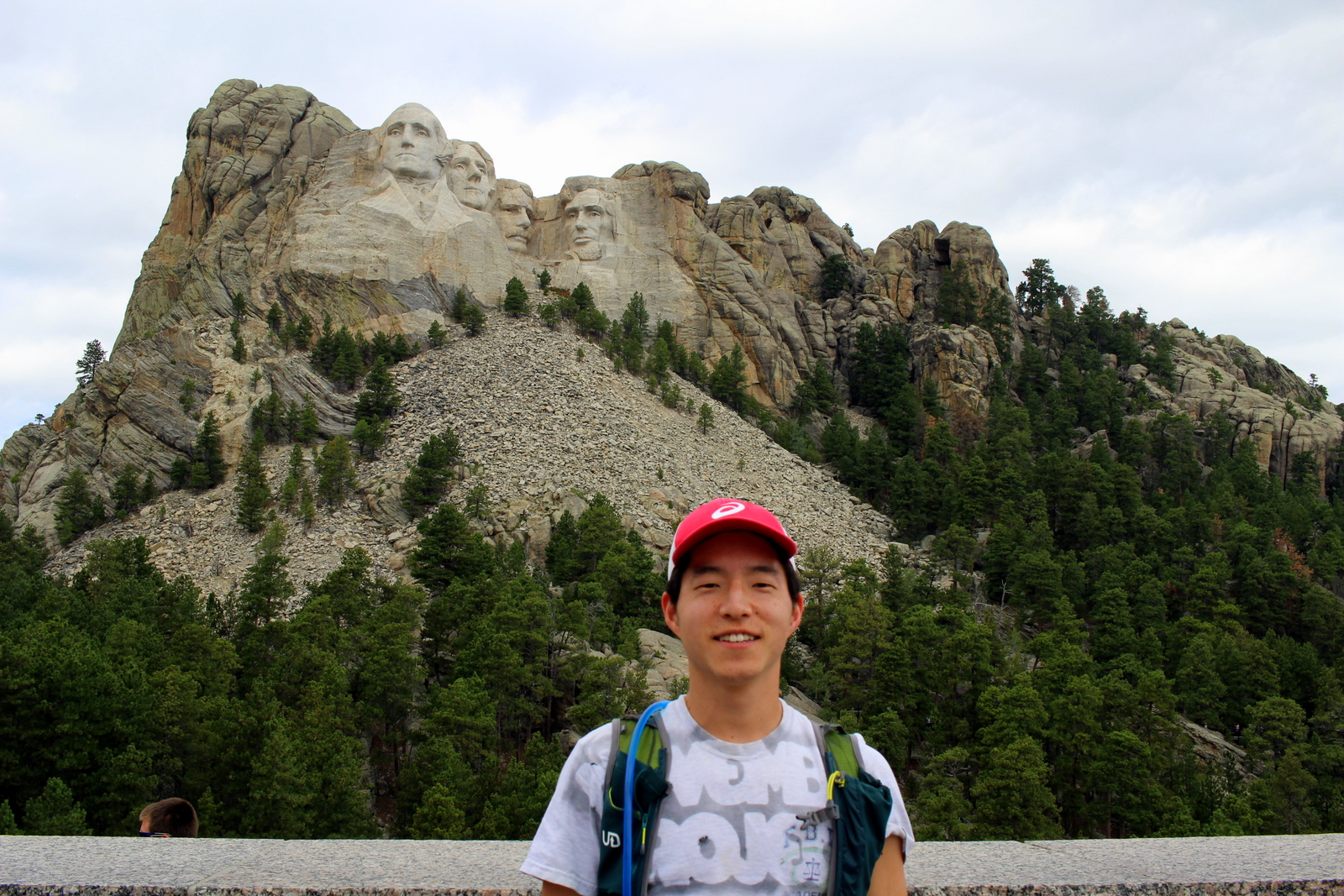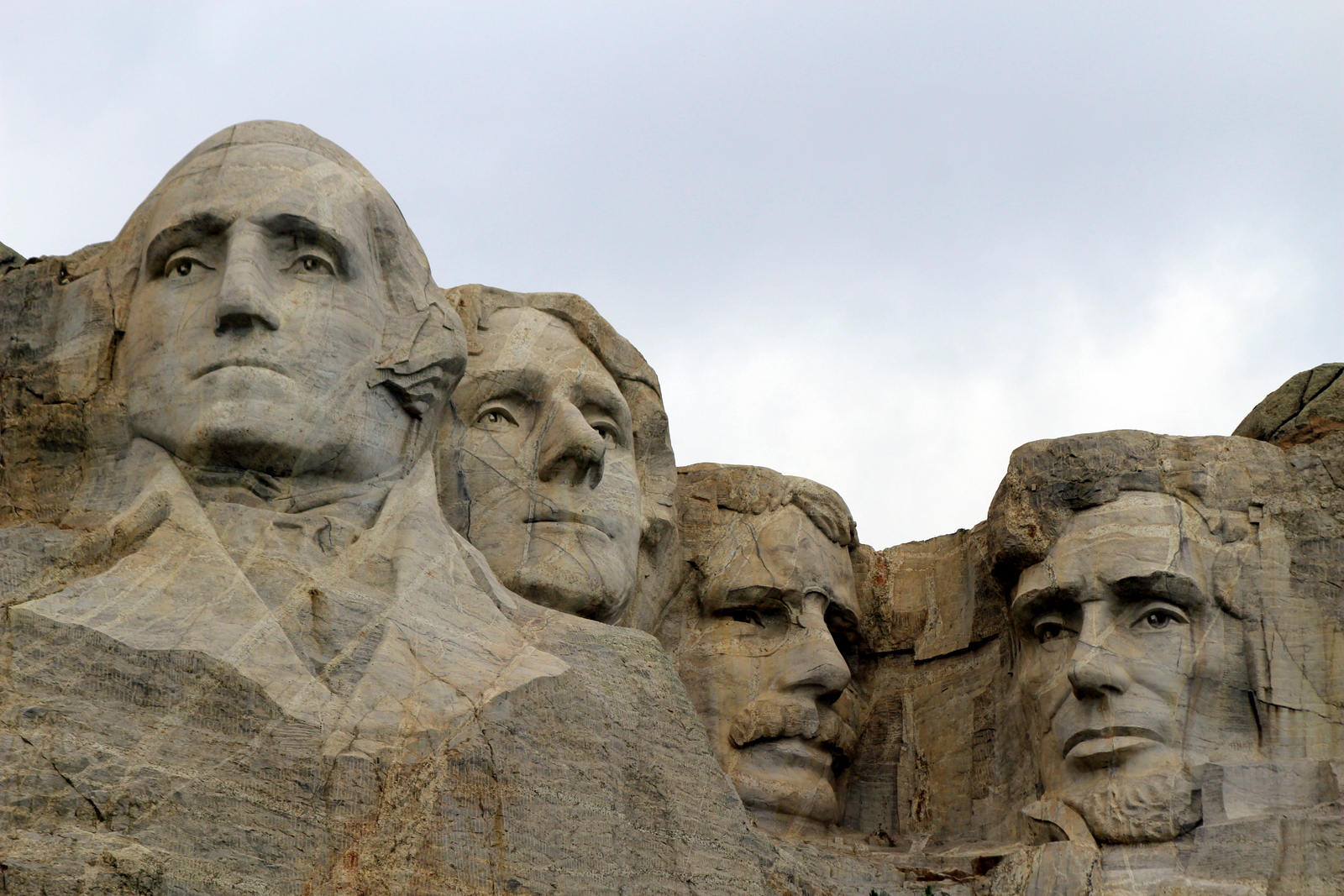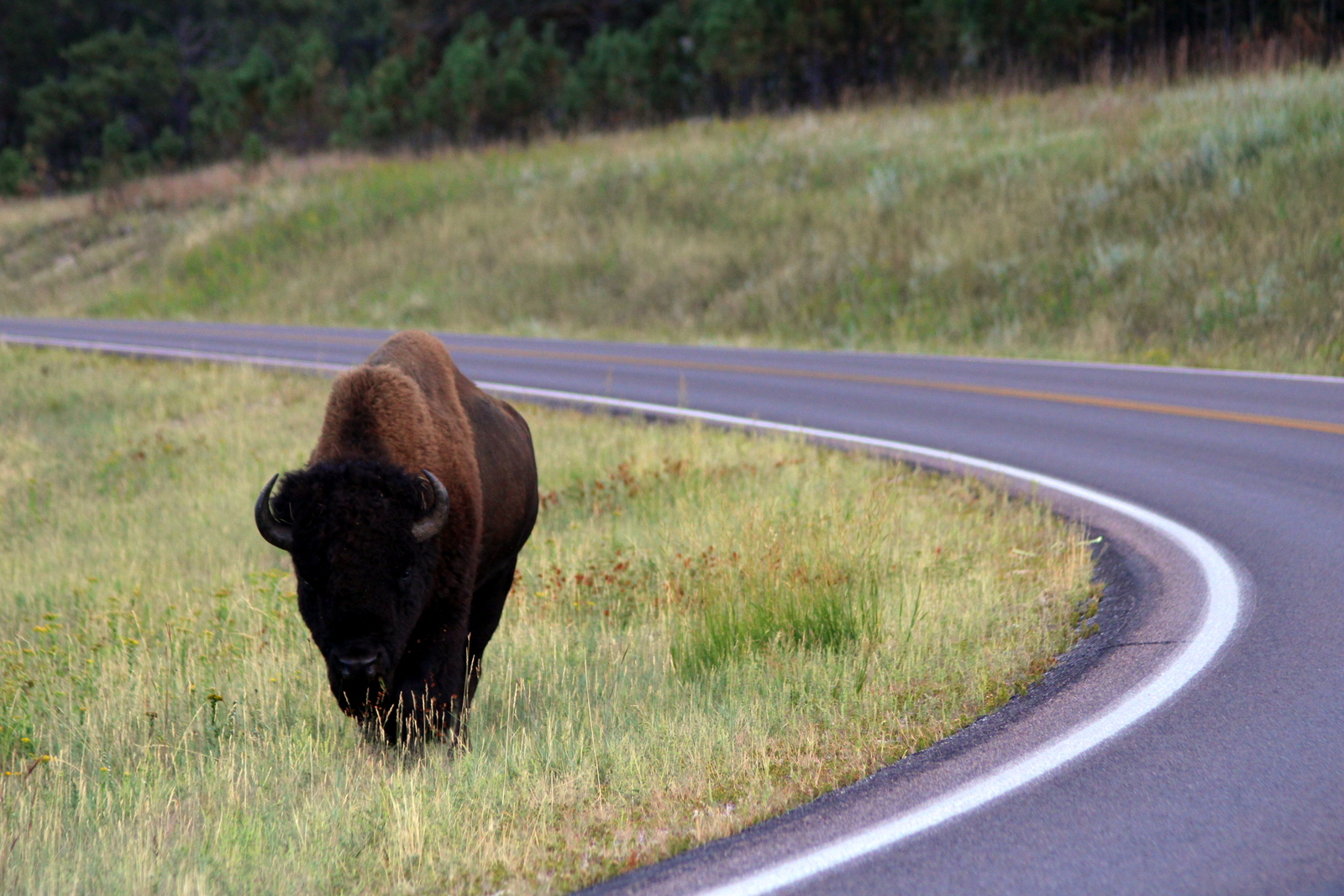I began this trip with a bang. On day 2, I ran the inaugural Twisted Branch Trail Run--a grueling 100K in the Finger Lakes Region of upstate New York. Normally, I log my race reports on my sport-tracking website. For those who are curious about what my first 100K trail race experience was like, I'm sharing my race report below. I drafted most of it in the days after the race, but I'm only now finishing it. (For the number nerds, here's my Strava data.)
The short version is that I executed one of the best races of my life. I focused on effort (using heart rate as an objective proxy), instead of time or pace, and that (unsurprisingly) led to an outcome that beat my wildest expectations. In just under 15 hours and 8 minutes, I (and my running partner, Jeremy L.) covered 64.5 miles of tough trails. The course had six major hill climbs, including three that were 1,000+ feet. In total, we gained 11,000 vertical feet. From an objective standpoint, this was physiologically the hardest athletic event I've ever done--by a good bit. The Ironman was certainly challenging, but took more than 3 hours less. It also let me use three different muscle groups; with this trail ultra, my legs--and only my legs--took the beating from wire to wire. I'm now well into my transformation from a road runner to a trail ultra runner and I couldn't be happier. Here's to future trail ultras!
Pre-race.
I arrived at the Ontario County Park campground at 12:30 a.m.--a mere 2.5 hours before my alarm was set to go off. Jeremy had already set up my tent, so I immediately passed out. 2.5 hours later, it was 3:00 a.m. and it was time to wake up. I ate 4 slices of white bread with peanut butter to get the digestive system going. I started drinking Tailwind and water to top up my hydration level. Despite the craziness of what was about to happen, I felt very calm. It was a cool morning, and I opted to wear my running pants and fleece while waiting around.
Before we knew it, it was 4:40 a.m., and we needed to proceed to the start. We quickly checked in at the registration table, which had coffee available. Because I'd not made my own, I decided I'd take a small cup. It was exactly what I needed to kickstart my race-day engine. A few minutes before 5 a.m., the RD made a few announcements. I honestly wasn't paying much attention. He directed us to the start line and, at 5 a.m. sharp, the roughly 90 entrants were off!
First half.
Jeremy and I set off into the forest in pitch black. We had our headlamps to light the path in front of us. I'd done a good bit of running at night, but that was almost always on the road or on very easy terrain. This was my first time running technical trails in the dark. It was challenging, to say the least, and required every bit of attention I could give. I tried to use my sense of hearing to listen, like a bat, for what was ahead of me.
After descending through a root-filled forest, we immediately found ourselves climbing a hill. My heart rate bumped above 150 bpm, so I made sure to ease off the gas. My goal going into this race was to target 145 bpm, with a hard stop at 150 bpm. That is, if I went above 150, I would back off until my heart rate dropped below that level. And if I dropped under 145, I wouldn't really change anything, as long as I was feeling comfortable.
The hills required a lot of fine-tuning of my effort level. Almost as soon as a climb started, my heart rate would shoot up. I would then slow down to a power-hike, and sometimes even a walk, until my heart rate settled. I knew that discipline and patience early on would pay off enormously in the second half. It felt slow, but slow was fine, at least for now. Jeremy stayed close by throughout, and we worked our way forward in what was still a very tight pack. The pack was both annoying and helpful. Annoying because we kept overlapping. Helpful because there was a continuous path of light that we could follow ahead.
At mile 6, we reached our first aid station. It was a quick stop. The sun had not yet risen, and everything was very peaceful. But we made sure not to rush through the aid stations. I refilled my Camelbak to about the 32-ounce mark. We pressed on. At about mile 9.5, we reached our first serious descent. We dropped almost 1,000 feet down from Clement Road to Naples Creek (Aid Station 2). It was fast.
Lisa was at Naples Creek. At this point, Jeremy and I were both feeling really strong. We stopped to refuel, and told Lisa how we were doing, before heading back into the forest. Once inside, we continued to press onwards, I focusing on setting a conservative heart rate-based pace, Jeremy focused on staying close to me. Almost immediately, we hit our first big 1,200-foot climb for the day. Because I was carrying my trekking poles, I deployed them and immediately began pole-planting uphill in a cross-country ski-like way. I could feel the pull in my triceps, but knew that it was better to tire out my arms if I could spare the legs a bit in exchange.
We reached the summit of that hill, and then almost immediately dropped into another 500-foot descent. I bombed down this one, letting my legs turn over quickly, and planting my trekking poles like the downhill ski racer that I used to be. It felt almost like slalom skiing through trees and over roots. The hills were relentless. At the bottom of this one, we passed the 16-mile mark and immediately began climbing Brink Hill, another 650-foot climb. Once we summitted, we popped out of the forest and onto a road for a bit. This was a welcome relief. Running on roads is so much easier, and faster, than running on trails (we would keep an easy 8:00-minute pace on flat roads, but that would be slower than 11:00-minute pace on the trails).
Pretty soon, though, we began another bomber descent. This was by far the steepest descent we'd done so far. I had to do a lot to keep from running into trees, or tripping over roots. Any time there was an obstacle--like a big branch, a stump, or a web of roots--I double-planted my poles and hurdled over as if I were on crutches. (This was a pretty nifty technique, and would come in very handy later in the race, when my feet were so heavy that I was dragging them like one of those sea-bottom trawling devices.) At some point, we were on the forest floor, and we made quick progress on the flat, open surface. That was a nice respite.
At the bottom of this ridiculous descent, we found ourselves at Italy Valley (Aid Station 4)--22.6 miles in. This was where I started cramping. Specifically, my right calf seized up. I knew that this was due to the electrolyte imbalance--what's called "hyponatremia". Basically, I recognized I'd been drinking too much straight water, and not enough foods or drinks with salts. My blood cells didn't have enough electrolytes, and therefore my muscles weren't firing properly because they had no medium through which to send signals from the brain. I decided to pop 5 Endurolyte tablets, partly to overcompensate, but also because I knew I genuinely needed that much. A supporter helped me stretch out my calf. I made sure to put down more food. We were only 5 hours in. I couldn't already be cramping!
We left Italy Valley and began our second 1,000-plus-foot climb. I frankly don't even remember this one. I was still feeling comfortable at this point, but we just had so many hills that it's almost impossible to distinguish them, even if they're particularly big like this one. When we finally reached the top, we realized that we'd basically done a full trail marathon. It had been just under 5.5 hours. It was crazy to think that this was my slowest marathon by almost 2 hours--and we still had another 1.5 trail marathons to go. As we ran along the top, another photographer was there, waiting by an opening in the trees. It was awesome to see the where we had come from (hint: really far).
After descending again, we found ourselves at Italy Turnpike (Aid Station 5)--29.3 miles into the race. We were basically at the halfway point. But we didn't treat this as the halfway point; mentally, we wanted the next aid station at mile 35.6 to serve as the halfway point. It was better for morale to think that our second half was shorter than our first. Somewhere near Italy Turnpike, I signaled to the photographer that things were going well.
Someone told us that the next stretch to the "halfway" point didn't have any major hills. That was true. But what it had instead was ridiculously technical terrain. We had to tiptoe carefully through webs of roots; navigate several mud patches; plow through tall, thick grass (which cut up our ankles and shins); and even hack our way through a full cornfield!
After what seemed like an endless 6.3-mile stretch, we reached Patch Road (Aid Station 6)--our halfway point. This was in front of a log cabin in the woods. A musician was strumming his guitar as Jeremy and I sat in camp chairs pouring cups of ice water over our heads and refilling and refueling. It seems stupid to soak yourself in water, but the ice water was critical to regulating core temperature. By this point, my system was fully revved up and burning full steam--after all, we were 7 hours and 45 minutes into the race!--so I ate everything in sight. Lay's potato chips were my secret weapon. But I took cup-fulls of Coke and peanut butter-filled pretzels as well. And, of course, I took bars and gels for the trails.
We had covered 35.6 miles in 7:45--or just over 13:00-minute pace. We quickly realized that there was no way in hell we would be crossing the finish line in 13 hours (what we'd initially estimated). Even 14 hours seemed unlikely. At this point, 14:30 was our rough time estimate, assuming things continued to go well.
Second half.
All that separated us from our next aid station was a 4.2-mile stretch. This was the shortest stretch of the race, yet it felt like an eternity. We were now approaching mile 40. In this stretch, the rollers were deceptively challenging. We also had one pretty rocky downhill section that challenged the ankles--and our balance.
From here it was all mental. Really, it was all about putting one foot in front of the other--and doing so in a way that overcame whatever obstacles lay in our path. At this point in the race, our leg muscles were so fatigued that we would barely be lifting them with each step. As a result, I kept stubbing my toes on roots, almost face-planting. Luckily, I would prevent a fall by planting my poles instinctively. That did not do anything for my toes, though. My left toes, in particular, got battered to no end. I was wearing the Hoka Cliftons, which is a road shoe and not really meant for trails. I told myself I'd change out into my Hoka Speedgoats soon. As we navigated the tighter forest section, I could smell Bud Valley, our next aid station.
Finally, we reached Bud Valley (Aid Station 7) at mile 39.8. We entered the aid station with Katie, who we had been playing leapfrog with throughout the day. We would generally catch her between aid stations, but she would spend very little time in each aid station and set off several minutes ahead of us. Even though we worked at different rates, it was fun to see her from time to time, and to exchange thoughts about how our races were going. (Katie ended up finishing over 20 minutes before us--seems like her strategy worked!)
I realized that I wasn't cramping at all. The electrolyte pills (Hammer Endurolytes, to be precise) were doing their magic. I shared some with Jeremy to ward off any cramps for the next 20-mile block.
It was absolutely bonkers ridiculous that we still had almost a trail marathon left to run! This was a pretty "dark" part of our race; it was a real challenge just to keep running. To counteract the darkness, Jeremy and I deployed the "aid station-to-aid station" goal-setting process. We broke the race down into aid station segments, instead of thinking about the total distance remaining (which was incomprehensible). So coming out of Bud Valley, all we thought about was hitting Glenbrooke Road. The elevation profile doesn't show anything larger than a roughly 600-foot climb, but the ups and downs (literally, of the terrain) were relentless, and gave our legs absolutely no rest. We had our mental ups and downs as well. For a while, I thought we were cruising. Then, I felt like I was at the bottom of a bottomless pit--the run was that torturous. At times, I felt hollow, like a ghost.
One of our most effective strategies to traverse the remaining distance was also the most simple: alternate running with walking. Because I was wearing my Garmin GPS watch, I could track our distance down to the hundredth of a mile. We'd pick a run interval distance, and then a walk interval distance. Depending on how fatigued we were in the moment, we'd alter the run-walk ratio. When feeling relatively fresh, we'd run 0.25 miles and walk 0.10 miles. At our worst, we'd run 0.10 miles and walk 0.20. In retrospect, it is wild to think about how much our "freshness level" fluctuated, not only over the course of the entire race, but even within the span of a few minutes.
We hit Glenbrooke Road (Aid Station 8) and, as planned, I changed out of my soaked and muddy Hoka Cliftons into my fresh Hoka Speedgoats. Because I was raising my feet less as I was getting more and more fatigued, I was also stubbing my toes more. I knew a few more of my toenails would fall off after this day. Changing shoes was a really good decision (The Cliftons, being road shoes, have minimal to no toebox protection, while the Speedgoats have decent protection), even though it meant wasting a few minutes.
We knew at this point that there was no turning back. We'd made it almost 47 miles, and we weren't about to quit now. We jumped back into the forest and pressed on toward BHB, the penultimate aid station. These were tough miles, and they were also blurry miles. It's hard figuring piecing together what happened from mile to mile. All I know is that we ran them.
At some point en route to BHB, we entered what felt like an enchanted forest. Though Jeremy didn't want to stop (he feared we'd lose what little momentum we had), I insisted that we take some photos. After all, we had no time goals today. We just wanted to finish, so why not take a little time to slow down?
We hit BHB (Aid Station 8) and were surprised by what we found. First, the station was an oasis in the middle of nowhere. Second, the couple manning the station were in very high spirits. Third, the theme for the station was Irish culture. There were four-leaf clovers and leprechauns. It felt a little bit like Halloween. The display was tacky, but provided perfectly timed comedic relief. We needed any sort of boost we could get to carry us through to the finish.
I don't know exactly where this was taken, but the photographer caught us one last time between Bud Valley and the finish line (Jeremy looks a bit tired).
We were now en route to the last aid station, in the town center of Urbana, which would give us one last time to see Lisa before our final epic 1,000-foot ascent of what I believe is called Brewers Hill. In the 5-mile stretch between BHB and Urbana, we came across a section where we were running on abandoned train tracks. It wasn't hard to maintain footing here, but it was just one more type of terrain that had been thrown at us, and I chuckled at the absurdity of the course's terrain.
We made it to Urbana with no hitches. I was absolutely starving. There was a tray of bacon on the table with about 6 slices left. I took two and scarfed them down. They were so salty and tasty. I asked the volunteers if I could have another one. They said "definitely!" I took a third. Again, it tasted so good. They egged me on: "take them all!" So I stuffed the remaining three thick, juicy slices into my mouth. (Spoiler: I had no stomach problems after this.) I felt a little bit bad for the people behind me, but I assumed they'd be making more bacon for those folks.
It was now almost 7 p.m., and we still had the 4.5 miles and the final charge up and down the 1,000-foot hill to go. We'd definitely be finishing in the dark, so we put our headlamps back on, smiled for the camera one last time, and made for the very big hill in front of us.
We got lost (for probably the tenth time all day) trying to find the trail over the hill. While retracing our steps, we noticed that a pair of runners was closing in on us. We could tell that they were picking up the pace; very clearly, they wanted to catch us. I don't know what it is about me and racing, but, even though I'd told myself that I needed to run conservatively (after all, I was about to spend another 40 days doing epic runs all across the country), I couldn't help but feel the urge to resist their surge and maintain our lead into the finish.
The final climb was one of the steepest we'd seen all day. There was no way we'd be running this; power-hiking was as fast as we could go. The pitch was so steep that sometimes I'd take a step and almost fall backwards (I was also incredibly fatigued, so that probably contributed to my lack of balance). We climbed slowly, but with determination, and at a steady rhythm. We reached a section with switchbacks and, as we snaked up the hill, we could see the pair of runners behind us--running! Over the next few minutes, the pair got closer and closer. At one point, they were just one full switchback below us. We could hear them panting as they closed the gap. We remained disciplined and kept to a slower, but more sustainable, power hike. Soon, they completely lost steam. We dusted them well before we reached the top of the ascent, and then they were goners.
At the top, we realized that we still had several miles left down the other side of the hill. It was getting dark, so the light from our headlamps was essential. This was a surprisingly treacherous part of the race. The darkness and the leg fatigue made it hard to get over the roots and rocks on the trail. Multiple times, I nearly fell. My trekking poles saved me each time.
We now knew we were finishing; the only question was how soon. We decided to kick things up a notch and finish strong. Where we'd normally be keeping 14-minute pace, we pushed hard and maintained 11-minute pace for the last 3 miles. We were making a hard effort, but we weren't redlining at all.
It was now very dark, especially because we were in a thick forest. Coming down the hill, we could hear the bells and cheering at the finish line. It sounded close, but we couldn't see anything yet, so we knew we had to maintain our composure and descend safely. The worst end to this day would be to trip and fall and seriously hurt ourselves. Finally, just a few minutes after 8 p.m., we emerged from the forest and crossed our last road. We were now on the final stretch into the finish line chute.
In that final few hundred yards, I had flashbacks of the day, and the individual moments that had gone so well. We'd covered such an insane distance, and such an immense variety of terrain, that I was almost moved to tears (this is a pattern: I get emotional with these things). In the final sprint, Jeremy and I joined hands and raised them. We crossed the finish line in 15 hours, 7 minutes, and 52 seconds. We were done.
Post-race.
Upon crossing the finish line, I was in mild shock. Not anything bad. Just a feeling of awe that we'd just conquered an epic course--one that had taken us up and down the equivalent of ascending and descending the Empire State Building 9 times! We'd run through mud patches, rock piles, fresh cornfields, singletrack, streams--you name it.
Despite this, we both felt surprisingly good. For the first time in a while, we'd run a race without thinking about a specific time goal. Instead, we'd followed our heart rates (well, technically mine) and just run a solid, consistent effort without thinking about our exact pace or time. And, unsurprisingly, that strategy likely led to a far better outcome than if we'd said to ourselves that we, for instance, wanted to break 15 hours. Had we employed that kind of strategy, we probably would've burned ourselves too early and ended up DNFing as well.
There were a lot of great things about the finish line amenities. We didn't get medals. I'm a little bit tired of race medals. After the first dozen, they lose their allure. They're also pretty useless, except perhaps as paperweights. Here, on the other hand, we had beautiful, hand-crafted ceramic mugs as mementos. The food was also excellent--there was a real pasta station serving basic pasta, sauce, and bread. Refueling immediately would reduce recovery time. Finally, we were close to a large body of water (Keuka Lake). A cool-off dip was in order (I'm submerged in the back, Jeremy is in the middle, and Katie is to the bottom left).
Jeremy and I finished tied for 16th overall (the official results don't reflect this, but we crossed the line together). We both felt incredibly proud of what we'd done that day. We later learned just how hard of a race, and course, this was. Only 47 runners would end up finishing the race; over 30 starters did not finish (they "DNFed"). Looking at the race history of the race winner, Daven Oskvig, also confirms how hard the race was. Daven normally wins every ultra race he enters, and his past 100K times are in the 8:30 to 9:00 range. Unsurprisingly, Daven won again (by almost 25 minutes) but his time was 11:45--over 35% slower than his typical times.
The experience of training for this race has shown me, more than anything, that I really love trail running. It was obviously also fun to do an even longer ultra race than the JFK 50 Mile, which I'd run last November. I'm not sure I want to go any further than the 100K distance. Jeremy, on the other hand, has been tactfully and not-so-tactfully dropping hints about "our 100 miler next year ;)" (this is a real text message). I don't think I'm ready to take on that challenge just yet (the leap from 100K to 100 miles is a 60% increase in distance!), but I'm at the very least intrigued.
For the time being, I'm going to try my best to get out onto the trails in the DC area, and keep the running fire going. Happy trails!












